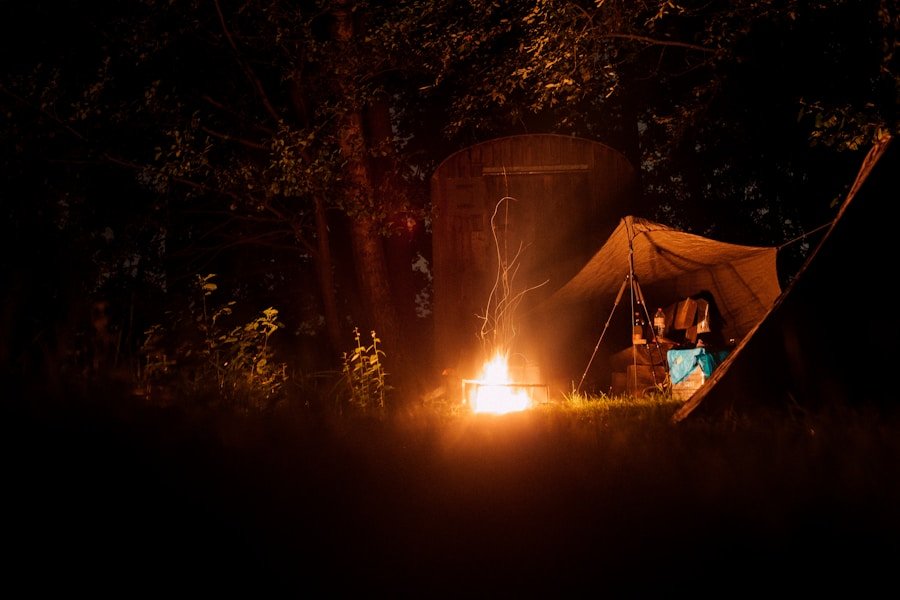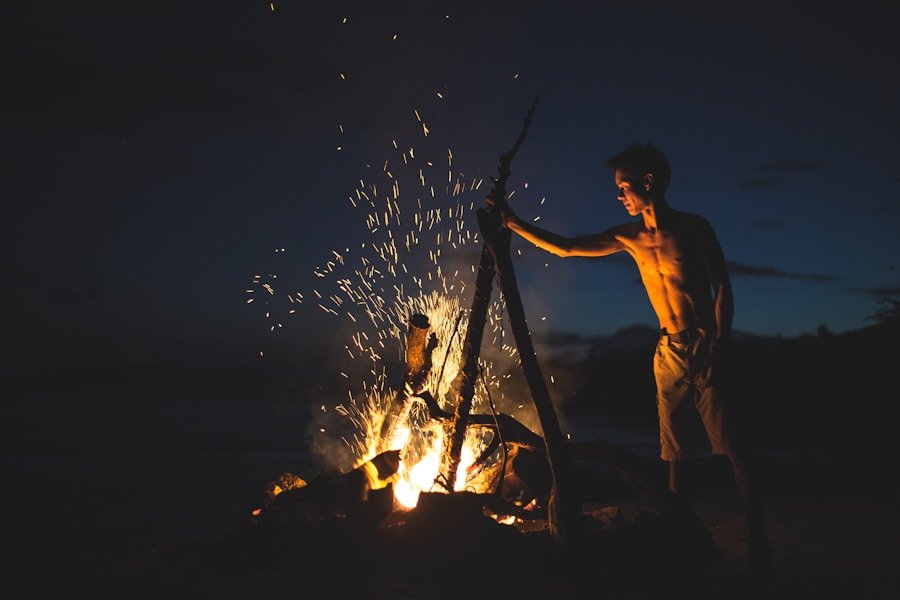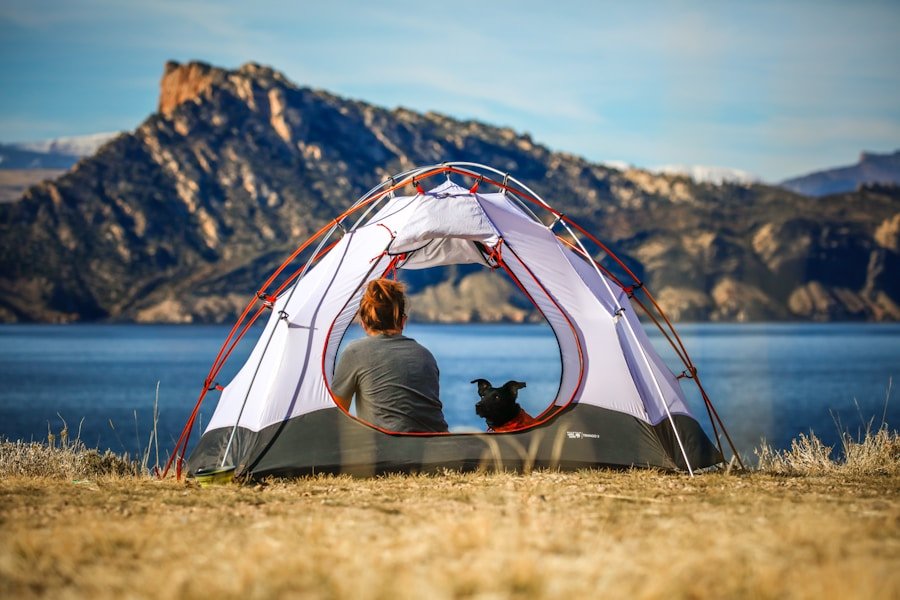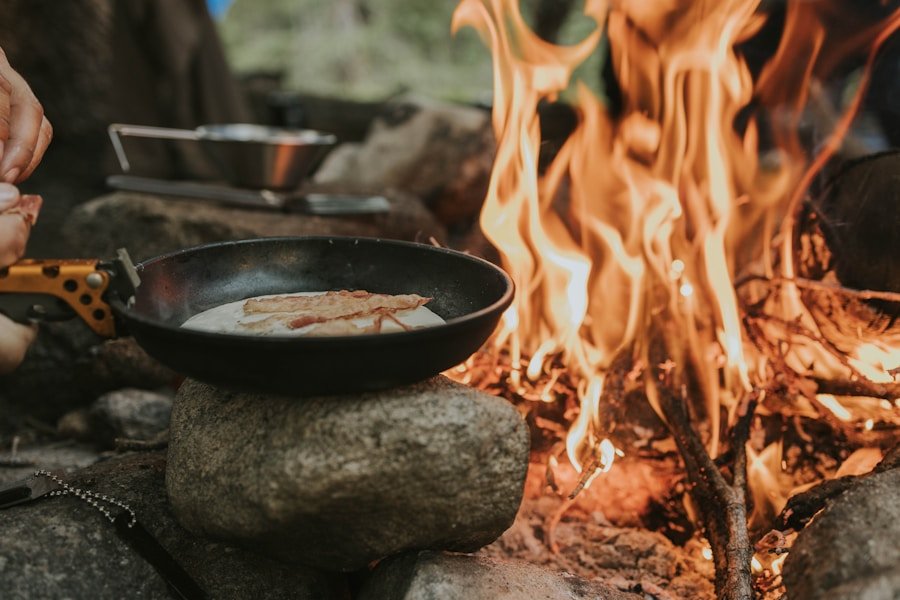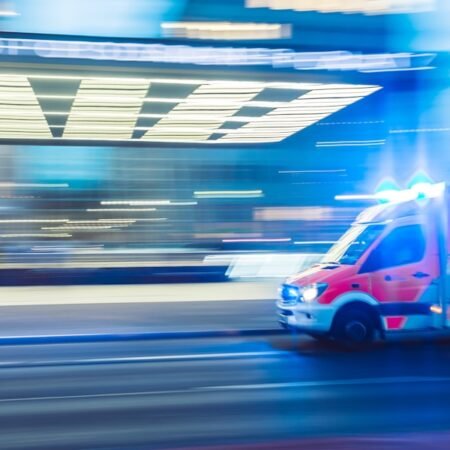When engaging in camping activities, it is vital to be prepared for any situation that may arise. A crucial aspect of preparation is possessing a comprehensive first aid kit. Regardless of whether you are camping in a remote wilderness area or a designated campground, accidents and injuries can occur at any time.
Having the necessary first aid supplies readily available can significantly impact the outcome, transforming a minor inconvenience into a major emergency. In outdoor settings, access to medical assistance may be limited, making immediate first aid provision potentially life-saving. In addition to being prepared for emergencies, a first aid kit can also provide a sense of security and reassurance.
Knowing that you possess the necessary tools and supplies to address minor injuries and illnesses can enhance the overall camping experience, making it more enjoyable and stress-free. Furthermore, it can instill confidence to venture into more remote areas, knowing that you are equipped to handle any potential medical issues that may arise. Overall, a well-stocked first aid kit is an indispensable component of any camping trip and should not be neglected.
Key Takeaways
- First aid is essential for campers to handle emergencies and injuries in the outdoors.
- A camping first aid kit should include items like bandages, antiseptic wipes, and a first aid manual.
- Knowing how to use first aid items in a camping emergency can make a difference in the outcome.
- Common injuries and illnesses in the outdoors include cuts, burns, insect bites, and dehydration.
- Regularly maintain and update your camping first aid kit, and consider getting first aid training for campers for added safety.
Essential Items for a Camping First Aid Kit
When assembling a camping first aid kit, it is important to include a variety of essential items to handle a range of potential injuries and illnesses. Some basic items to include in your kit are adhesive bandages, gauze pads, adhesive tape, antiseptic wipes, tweezers, scissors, and a thermometer. These items can be used to treat minor cuts, scrapes, burns, and insect bites.
It is also important to include items for more serious injuries, such as a splint, elastic bandage, and a tourniquet. Additionally, it is important to include medications such as pain relievers, antihistamines, and anti-diarrheal medication. In addition to these basic supplies, it is important to consider the specific needs of your camping trip.
If you will be camping in an area with a high risk of snake bites or other wildlife encounters, it may be necessary to include a snake bite kit or other specialized supplies. If you or someone in your group has specific medical needs, such as allergies or chronic conditions, it is important to include any necessary medications or supplies in your first aid kit. Overall, the key to a well-stocked first aid kit is to be prepared for a wide range of potential emergencies and to tailor your supplies to the specific needs of your camping trip.
How to Use First Aid Items in a Camping Emergency
In the event of a camping emergency, it is important to know how to use the items in your first aid kit effectively. One of the most important skills to have is the ability to assess the situation and prioritize treatment. In some cases, it may be necessary to stabilize the injured person and seek help from emergency services as quickly as possible.
In other cases, it may be necessary to provide immediate first aid to prevent further injury or illness. Knowing how to use items such as bandages, splints, and tourniquets can be crucial in these situations. It is also important to know how to administer medications and treatments safely and effectively.
For example, knowing how to properly clean and dress a wound can prevent infection and promote healing. Knowing how to administer medications such as pain relievers and antihistamines can provide relief from symptoms and improve the overall comfort of the injured person. In some cases, it may also be necessary to provide CPR or other life-saving interventions.
Having the knowledge and skills to use the items in your first aid kit effectively can make a significant difference in the outcome of a camping emergency.
Common Injuries and Illnesses in the Outdoors
| First Aid Essentials | Quantity | Description |
|---|---|---|
| Adhesive bandages | 10 | For covering small cuts and scrapes |
| Gauze pads | 4 | For larger wounds and to stop bleeding |
| Antiseptic wipes | 10 | For cleaning wounds and preventing infection |
| Tweezers | 1 | For removing splinters or ticks |
| Scissors | 1 | For cutting bandages and tape |
| Instant cold pack | 2 | For treating sprains and strains |
| First aid manual | 1 | For guidance on treating various injuries |
When camping, there are a number of common injuries and illnesses that campers may encounter. One of the most common injuries is cuts and scrapes from falls or accidents. These can easily occur while hiking, setting up camp, or cooking over an open flame.
In addition to cuts and scrapes, burns from campfires or cooking equipment are also common. Insect bites and stings are another common issue when camping in the outdoors. These can range from minor irritations to more serious allergic reactions.
In addition to injuries, there are also a number of common illnesses that campers may encounter. Gastrointestinal issues such as food poisoning or diarrhea are common when camping, especially if proper food safety practices are not followed. Allergies can also be a concern when camping, especially for those with allergies to insect stings or certain plants.
Finally, heat-related illnesses such as heat exhaustion and heat stroke can occur when camping in hot weather. Being aware of these common injuries and illnesses can help campers prepare for potential emergencies and take steps to prevent them from occurring.
Tips for Maintaining and Updating Your Camping First Aid Kit
Once you have assembled your camping first aid kit, it is important to regularly maintain and update it to ensure that it remains effective. One important aspect of maintaining your first aid kit is regularly checking the expiration dates on medications and supplies. Over time, medications can lose their effectiveness and supplies such as bandages and gauze pads can become damaged or contaminated.
It is important to regularly check these items and replace them as needed. In addition to checking expiration dates, it is also important to periodically review the contents of your first aid kit and make any necessary updates based on your camping plans. For example, if you will be camping in an area with a high risk of snake bites, it may be necessary to add a snake bite kit or other specialized supplies to your first aid kit.
If you or someone in your group has developed new medical needs since your last camping trip, it is important to update your first aid kit accordingly. By regularly maintaining and updating your first aid kit, you can ensure that you are prepared for any potential emergencies that may arise during your camping trip.
First Aid Training for Campers
In addition to having a well-stocked first aid kit, it is also important for campers to have the knowledge and skills necessary to provide effective first aid in an emergency. One way to gain these skills is by taking a first aid training course. Many organizations offer first aid training specifically tailored for outdoor enthusiasts, covering topics such as wilderness first aid and CPR.
These courses provide hands-on training in essential first aid skills such as wound care, splinting, and CPR. In addition to formal training courses, there are also many resources available for campers who want to learn more about first aid on their own. There are numerous books and online resources that provide information on basic first aid skills as well as specific topics such as treating snake bites or identifying poisonous plants.
By taking the time to educate yourself about first aid, you can gain the knowledge and confidence necessary to handle potential emergencies while camping.
Additional Safety Measures for Outdoor Adventures
In addition to having a well-stocked first aid kit and the knowledge necessary to provide effective first aid, there are several additional safety measures that campers can take to minimize the risk of injury or illness while camping. One important safety measure is proper preparation and planning before setting out on a camping trip. This includes researching the area where you will be camping, checking weather conditions, and familiarizing yourself with any potential hazards such as wildlife or poisonous plants.
Another important safety measure is practicing good hygiene and food safety while camping. This includes properly storing and preparing food to prevent foodborne illness, as well as practicing good hand hygiene to prevent the spread of germs. It is also important to stay hydrated and protect yourself from extreme weather conditions such as heat or cold.
Finally, it is important for campers to have a plan in place for seeking help in the event of an emergency. This includes knowing how to contact emergency services in the area where you will be camping and having a plan for evacuating the area if necessary. By taking these additional safety measures, campers can minimize the risk of injury or illness while enjoying their outdoor adventures.
In conclusion, having a well-stocked first aid kit and the knowledge necessary to provide effective first aid are essential components of any camping trip. By being prepared for potential emergencies and taking steps to prevent injury or illness, campers can enjoy their outdoor adventures with confidence and peace of mind. Whether you are an experienced outdoor enthusiast or new to camping, taking the time to prepare for potential emergencies can make all the difference in ensuring a safe and enjoyable camping experience.
FAQs
What should be included in a camper’s first aid kit?
A camper’s first aid kit should include items such as adhesive bandages, gauze pads, adhesive tape, antiseptic wipes, tweezers, scissors, a thermometer, pain relievers, and any personal medications.
Why is it important for campers to have a first aid kit?
Having a first aid kit is important for campers because it allows them to quickly and effectively treat minor injuries and illnesses while in the outdoors. It can also provide essential supplies in case of emergencies.
How often should a camper check and restock their first aid kit?
Campers should check and restock their first aid kit before each camping trip to ensure that all supplies are up to date and in good condition. Additionally, it is important to periodically check expiration dates on medications and ointments.
What are some additional items that campers may consider adding to their first aid kit?
Additional items that campers may consider adding to their first aid kit include a CPR mask, a first aid manual, insect repellent, sunscreen, and any specific items needed for pre-existing medical conditions.




